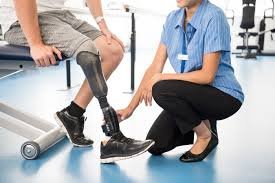Introduction
More children in Hong Kong are being diagnosed with autism than ever before. Awareness is growing, and so is the need for proper support.
But with so many therapy choices out there—ABA, speech, OT, and more—it’s easy to feel overwhelmed.
Therapy plays a big role in helping children with autism Hong Kong learn, grow, and live independently. The earlier it starts, the better the results.
This guide breaks down the most common and effective therapy options in Hong Kong. We’ll keep things simple, parent-friendly, and packed with helpful details.
Understanding Autism Therapy – What Does “Effective” Mean?
The Role of Therapy in Autism Support
Helps with communication, social, and daily living skills
Therapy teaches children how to express themselves, connect with others, and handle everyday tasks like dressing or eating.
Supports emotional regulation and independence
It also helps children manage their emotions and become more independent.
Builds routines that support learning at home and school
Consistent therapy routines carry over into school and home life.
Factors That Make Therapy “Effective”
Evidence-based practices with proven outcomes
Good therapy is backed by research. It’s not just trendy—it works.
Therapists trained in autism-specific strategies
Therapists should know how to work specifically with autistic children, not just general child development.
Custom plans for each child’s needs
Every child is different. One size doesn’t fit all.
Family involvement in the therapy process
When parents are involved, progress is faster and long-lasting.
Applied Behavior Analysis (ABA) Therapy in Hong Kong
What Is ABA?
A structured, goal-based approach to behavior change
ABA breaks down skills into small steps and uses positive reinforcement to teach them.
Focuses on communication, behavior, and learning readiness
It targets behaviors that help a child succeed at school, home, and in social settings.
Pros and Considerations
Widely researched and used worldwide
ABA is one of the most studied autism therapies.
Intensive and individualized – but time-consuming
Sessions can be long and frequent. Progress takes time.
Can feel rigid without the right therapist match
It’s important to find a therapist who makes the sessions fun and child-friendly.
Where to Find ABA in Hong Kong
Autism Partnership Hong Kong
One of the top providers with trained BCBA professionals.
Shine Skills Centre
Focuses on life skills and independence through ABA.
Private BCBA-certified therapists
Some offer in-home services or small-group settings.
Speech and Language Therapy for Autism
What Does Speech Therapy Help With?
Expressive language – helping a child speak or use visuals
Supports children who are non-verbal or have trouble speaking.
Receptive language – helping a child understand others
Teaches how to follow directions and respond to questions.
Social communication – turn-taking, eye contact, conversation
Helps with basic conversation and social interaction.
Unique Considerations in Hong Kong
Bilingual or trilingual learning environments
Therapists must understand how language learning works in a Cantonese-English world (and sometimes Mandarin too).
Limited public speech therapy slots
Free options exist but often have long waitlists.
Cultural preferences for verbal fluency and academic success
Parents may feel extra pressure due to local education standards.
Where to Find Speech Therapy
The Speech and Language Centre
Highly rated for one-on-one and group sessions.
Public hospitals and assessment centres
Usually accessed through referral after a diagnosis.
Private clinics like Watchdog and Sprout in Motion
Offer holistic services with speech therapy included.
Occupational Therapy (OT) for Autism
What Is OT and Who Needs It?
Supports daily life skills – dressing, eating, handwriting
OT helps children manage everyday challenges.
Helps children with sensory issues (too much or too little sensitivity)
Great for children who are easily overwhelmed or under-stimulated.
Teaches fine motor skills and body awareness
From buttoning shirts to using scissors, OT builds these foundations.
How OT Looks in Practice
Sensory gyms and play-based learning
Therapists use play to help children learn in a fun way.
Use of tools like weighted vests, textured mats, or therapy swings
These tools help with focus, calm, and motor planning.
Parent involvement for home-based carryover
Parents often learn how to repeat activities at home.
Where to Access OT in Hong Kong
OT & Me (specialized OT centre)
Popular with expat and bilingual families.
NGOs like Heep Hong and SAHK
Trusted by local families and offer sliding-scale fees.
School-based OT support
Some kindergartens and primary schools offer OT for mild cases.
Other Therapeutic Approaches That Work
DIR/Floortime Therapy
Child-led, relationship-based therapy
Focuses on emotional connection and social interaction.
Helps with emotional development and connection
Great for children who don’t respond to structured settings.
Less structured but more natural for some children
Especially helpful for children who resist rigid routines.
Play Therapy
Used for younger children or those with social/emotional struggles
Therapy through play can be less stressful for some kids.
Encourages learning through pretend play and symbolic activities
This helps build creativity, flexibility, and understanding.
Music and Art Therapy
Good for non-verbal or emotionally sensitive children
Children can express feelings through music and art.
Builds expression, creativity, and emotional regulation
Many children love this type of therapy.
Available through select NGOs and private clinics
Check local centers like TREATS or the Child Development Centre.
Parent Coaching and Home Programs
Programs like Hanen or Triple P
Train parents to guide learning and behavior at home.
Teach parents how to embed therapy in everyday life
Simple games, routines, and strategies can go a long way.
Often more affordable than direct therapy
Ideal for families on a budget or waiting for services.
How to Choose the Right Therapy for Your Child
Start with a Diagnosis or Evaluation
Child Assessment Centre (Hospital Authority) or private developmental pediatrician
This is your first step before starting therapy.
Use the report to decide on therapy types
The assessment will show your child’s strengths and needs.
Match Therapy to Your Child’s Needs
Communication issues? Start with speech therapy
For verbal delays or unclear speech.
Behavioral concerns? ABA or play therapy
Best for meltdowns, attention issues, or routines.
Sensory or daily living skills? OT may help
Good for fine motor skills and calming strategies.
Practical Considerations
Location and travel time
Choose a center near home or school if possible.
Budget and availability
Ask about waitlists, packages, and payment plans.
Language needs (Cantonese, English, Mandarin)
Make sure your child can understand the therapist.
Ask These Questions Before Starting
What are the therapist’s qualifications?
Look for certifications and experience with autism.
Are goals reviewed and tracked regularly?
Clear progress tracking means better results.
Can parents be involved in sessions or home carryover?
Parent-friendly therapists make a big difference.
Is there a trial session or initial consultation?
Test the waters before committing long-term.
Blended and Integrated Therapy Models in Hong Kong
Why Mixing Therapies Often Works Best
Many children need both behavior and communication support
It’s common to do ABA and speech together.
One-size-fits-all doesn’t work for autism
Every child’s path is different.
Coordinating Across Therapists
Sharing reports and setting joint goals
Make sure all therapists are on the same page.
Keeping a therapy journal or communication book
Helps track progress across settings.
Clinics Offering Integrated Services
Watchdog Early Learning Centre
Offers speech, OT, and ABA under one roof.
Sprout in Motion
Holistic and family-centered care with multiple therapists.
Heep Hong Society
Well-known NGO with multiple affordable options.
Conclusion
From ABA to OT, speech therapy, and more—there are many ways to support your child with autism in Hong Kong.
The best therapy isn’t always the most expensive or popular. It’s the one that fits your child’s needs, your family’s lifestyle, and your budget.
Start small. Ask questions. Trust your instincts. Help is out there.
Optional Add-ons for Engagement and SEO
- Infographic: “Therapy Options for Autism in Hong Kong – What’s the Difference?”
- Downloadable PDF: “Checklist: What to Ask Before Choosing a Therapy”
- Sidebar Feature: “Parent Tips: How We Chose the Right Mix of Therapy”
FAQs
Is ABA therapy available in Cantonese?
Yes. Many ABA providers in Hong Kong offer bilingual sessions.
Can my child do speech and OT at the same time?
Absolutely. In fact, many children benefit from both therapies together.
How do I find bilingual therapists in Hong Kong?
Ask clinics directly or look for services like Sprout in Motion, Heep Hong, or OT & Me.



